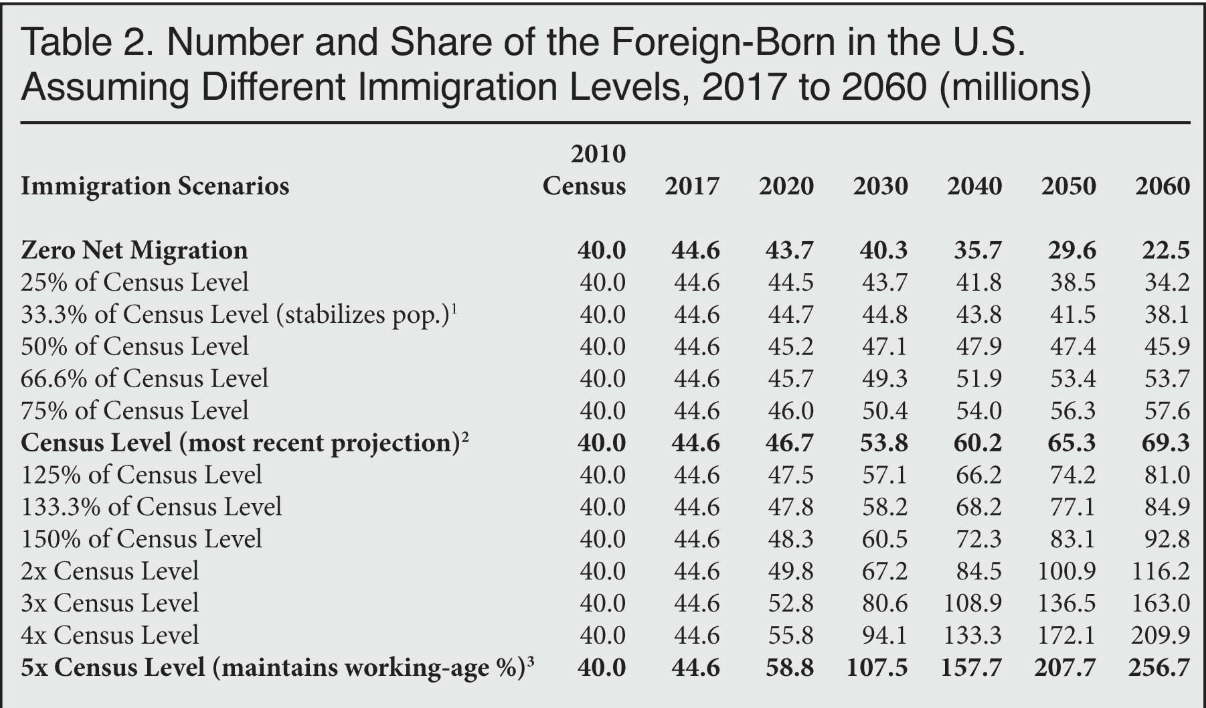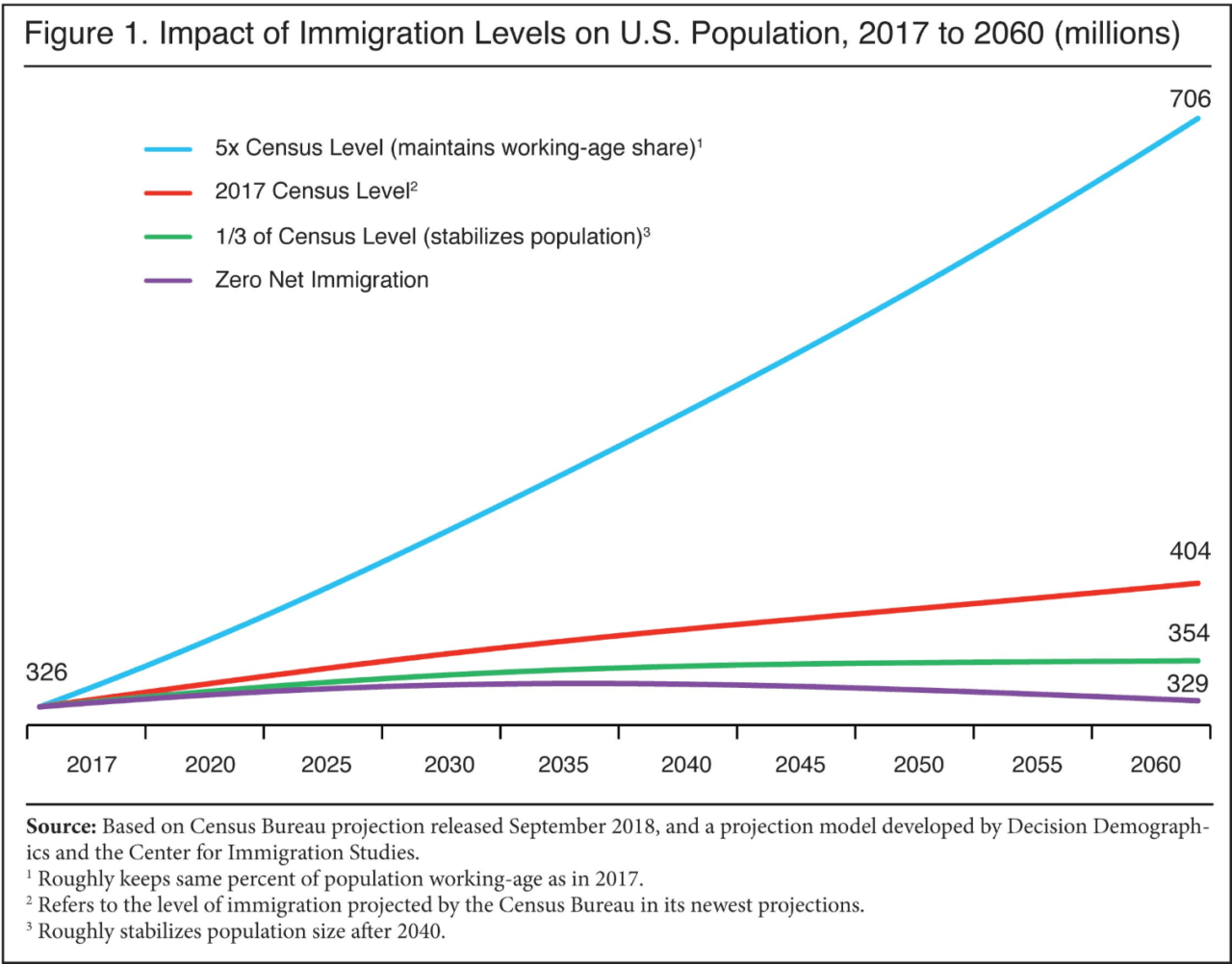The foreign-born population will hit an unprecedented 69 million by 2060 should current legal immigration levels — wherein the U.S. admits more than a million legal immigrants a year — continue unchanged.
Newly released Census Bureau analysis by the Center for Immigration Studies reveals that current legal immigration levels will be practically the sole driver of U.S. population growth, increasing the foreign-born population from it’s current 44.6 million to a record 69.3 million.
This would represent a 56 percent increase in the foreign-born resident share of the total U.S. population in just four decades.
Also, this increase in the foreign-born population does not include the U.S.-born descendants of those residents. Foreign-born residents give birth to about 791,000 children every year who are rewarded with automatic birthright American citizenship solely for being born within the parameters of the country. Should this birth rate among foreign-born residents remain steady over the next four decades, about 32 million U.S.-born children to foreign mothers would receive birthright citizenship.
The U.S. does not have to rapidly increase its total resident population and foreign-born population, as legal immigration moratoriums have been implemented in the past to give time for new arrivals to properly assimilate to American life. Halting legal immigration would have the added bonus of boosting wages for America’s working and middle class.
Under scenarios in which the U.S. either halts legal immigration or reduces current levels to about half for the next four decades, the foreign-born population would stabilize to anywhere between 22.5 million to about 45.9 million.
Likewise, halting or reducing legal immigration would stabilize the total U.S. population, rather than driving it to a historic 404 million residents by 2060. With zero net legal immigration to the country, the U.S. population would stabilize around 329 million residents in the next four decades.
Even reducing current legal immigration levels by half would stabilize the U.S. population to about 367 million total residents. This would be 37 million fewer residents crowded into the country than if current legal immigration levels were unchanged.
U.S. voters have hinted that they favor a near immigration moratorium, since the country’s immigration flow has boomed to historic levels. In an April 2018 Harvard/Harris Poll, two out of three voters said they supported President Trump’s previous plan to cut legal immigration levels down to at least 500,000 admissions a year.
A similar Harvard/Harris Poll in January 2018 found that more Americans support zero immigration to the country than they do current legal immigration levels. Black Americans, in the same Harvard/Harris Poll, were found to be the most supportive of a near immigration moratorium. Nearly half of black Americans said they would like to see between one and 250,000 legal immigrants brought to the U.S. a year.
Should legal immigration levels go unchanged and the U.S. population reaches 404 million residents by 2060 as Census Bureau researchers project, the country’s population will be more than double what it was in 1965, when about 194 million residents lived in America.
John Binder is a reporter for Breitbart News. Follow him on Twitter at @JxhnBinder.



COMMENTS
Please let us know if you're having issues with commenting.